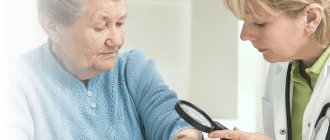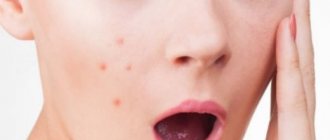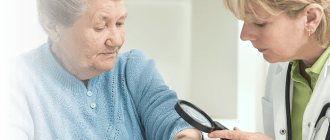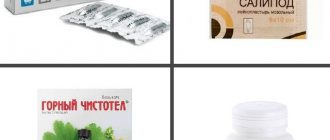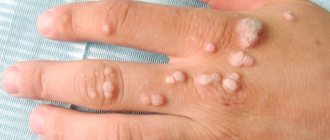Causes
Flat warts affect only the skin of patients infected with the human papillomavirus (HPV). It is transmitted mainly through contact and household contact. It has been proven that you can become infected with HPV through:
- kisses, hugs, handshakes;
- using personal items of a sick person: towels, linen, dishes;
- contact with an infected object in a public place: railings, door handles, elevator buttons.
The virus enters the body through minor damage to the mucous membranes and epidermis. Next, it goes to the nervous system, where it “settles” in a sleeping state. Flat warts appear when there is a trigger. It could be:
- decreased immunity;
- severe emotional stress;
- exacerbation of chronic pathologies;
- stressful incident;
- hormonal imbalance;
- skin injuries affecting local immunity;
- lack of personal hygiene.
Most of the inhabitants of the Earth are carriers of the virus, but it does not manifest itself in any way.
Warts are skin growths, mostly benign, caused by different types of human papillomavirus (HPV).
HPV, getting on the skin or mucous membrane, penetrates the cell and penetrates into the nucleus, where it can remain inactive for a long time. Under conditions leading to immunosuppression, the virus begins to multiply in the nucleus, causing proliferation of epithelial tissue.
At present, it is obviously impossible to achieve a complete cure for HPV infection through monotherapy. However, the therapeutic methods of modern medicine make it possible to inactivate the virus and achieve stable long-term remission [1].
Methods that reliably ensure the removal of warts are the external use of drugs based on salicylic acid (possibly used at home) and cryotherapy prescribed by a doctor. Injection immunotherapy in the treatment of nongenital common (vulgar) warts can be used on large warts that are difficult to treat with other means (Table 1).
Warts occur in 10% of children and adolescents. The age group 12-16 years old is at greatest risk. Girls get warts more often than boys. The peak incidence occurs at 13 years in girls and 14.5 years in boys [4].
It has been established that without special treatment, warts disappear after 2 years in 40% of children [5]. They usually continue to increase in size and may become more resistant to treatment over time [6]. Children with treatment-resistant warts can become active carriers of HPV. In addition, depending on the location, warts can be painful (for example, if they are located on the sole or periungual fold), and can also be perceived as an obstacle to communication if the warts are located on visible areas (for example, the hands or face) [7].
Treatment approaches
Currently, there are different approaches to treating warts, including observation and a combination of several methods to increase effectiveness. The choice of treatment method should be made on a case-by-case basis based on the physician's experience, patient preference, and application of an evidence-based approach. In immunocompromised patients who complain of warts, treatment may not lead to significant improvement, and the warts may be resistant to the drugs used. The two most common methods for removing warts are the use of salicylic acid and liquid nitrogen cryotherapy [8].
Salicylic acid preparations
The Cochrane Central Register of Controlled Trials assessed that topical salicylic acid is a safe and effective treatment for wart removal [8]. In addition, according to the report, there is no information to support the superiority of other methods in terms of treatment effectiveness or fewer side effects. Pooled data from 6 randomized controlled trials indicate a 75% effectiveness of treatment in patients using salicylic acid preparations, compared with 48% in the control group [8]. The manual by J. Sterling et al. [7] Salicylic acid has been named the drug of choice for the treatment of flat warts on the face, plantar warts, and flat and common warts on the hands.
Currently, there are various salicylic acid-based products on the market. Over-the-counter medications contain less than 20% salicylic acid, while prescription medications may contain up to 70% salicylic acid [9]. However, 15-20% salicylic acid is usually enough to cure a wart.
The effectiveness of treatment with salicylic acid preparations, according to various sources [10], is 40-84% (on average 61%). The therapeutic benefits of topical salicylic acid-containing products, both prescription and over-the-counter, are supported by randomized controlled trials [11–14]. The use of salicylic acid preparations is considered first-line therapy in the treatment of nongenital common warts (Table 2)
[9].
In the Russian pharmaceutical market, among over-the-counter drugs based on salicylic acid, Collomak
, produced in the form of a liquid varnish with a shaving brush lid.
Collomak
is a modern multicomponent drug that contains active ingredients: keratolytics - salicylic (20%) and lactic (5%) acids, emulsifier polidocanol 600 (2%), as well as special fillers that form the basis of the varnish dosage form - a film-forming substance ( ethylcellulose 5.5%), plasticizer (dibutyl phthalate 1%), solvents (acetone 6.65%).
The polidocanol component of Collomac
also causes sclerosis and obliteration of small veins and arteries at the site of application.
Collomak
applied to a wart or callus, after which the horny layers are easily removed.
If necessary, this treatment is carried out several times. To avoid damage to the surrounding skin when applying Collomac
, it is protected with indifferent zinc paste.
You can protect the surrounding skin with adhesive tape by cutting a hole in the middle. The duration of treatment is determined depending on the effectiveness of the drug. For adults, the maximum dose of Collomac
is 10 ml/day, which corresponds to 2 g of salicylic acid, for children - 1 ml, which corresponds to 0.2 g of salicylic acid.
It is not recommended to exceed the indicated dose and treat several areas of the skin and mucous membranes at the same time. During pregnancy, the use of Collomak
is permissible only when applied to a limited surface (no more than 5 cm).
When using the drug in the maximum daily dose in adults and children, the duration of treatment should not exceed 1 week. Positive experience with the use of Collomac
allows us to recommend this drug for widespread use in gynecological and dermatological practice in the treatment of warts and genital warts [1].
Cryotherapy
The effectiveness of cryotherapy treatment varies widely depending on the treatment regimen. As a rule, the wart is frozen for 10-30 seconds until a ring 1-2 mm thick forms around the frozen ball of the treated area. The maximum effectiveness of therapy is achieved when treated at intervals of 2-3 weeks. A positive result of therapy lasting more than 3 months is not documented [10, 11]. The best rate of effectiveness in the treatment of plantar warts was achieved when cutting off the hyperkeratotic surface and using two freezes with intermediate complete thawing [11, 13]. For common warts not located on the palms or soles, it is preferable to use one-time freezing [9]. One scientific report recommends the use of cryotherapy as first-line therapy for the treatment of flat and simple warts [7].
Cryotherapy is also offered as second-line therapy for flat and simple warts on the face [7]. A report by R. Brodell et al. [9] Cryotherapy is proposed as an effective treatment for simple and plantar (cutting with two freezing cycles) and flat warts. According to a report from the Cochrane Central Register of Controlled Trials [8], cryotherapy is not superior to topical medications for nongenital common warts.
Laser therapy
With the help of laser therapy, it is possible to influence the hemoglobin of red blood cells contained in the blood vessels of the wart. In this case, thermal energy is extrapolated to adjacent tissues, which leads to coagulation of blood vessels. As a result of the procedure, a necrotic area with a wart remains, which is easily rejected [15]. Studies examining the effectiveness of laser therapy after 2-3 sessions show a positive result in 48-83% of cases for warts located on different parts of the body [16, 17].
In addition to physical destruction, lasers have a toxic effect on HPV, but the recurrence rate for this method is quite high - 4-22% [18]. K. Robson et al. [19] in a prospective randomized study showed that the effectiveness of laser therapy and conservative treatment methods is comparable. The use of laser therapy is recommended as second-line therapy for plantar warts and third-line therapy for common and flat warts [9].
Immunomodulators and antiviral drugs
The main mechanism of action of drugs in this group (imiquimod, kagocel) is the ability to induce the production of late interferon (IFN; a mixture of α-IFN and β-IFN), which has high antiviral activity. For chronic viral infections, they are recommended to be prescribed simultaneously with external therapy.
J. Sterling et al. [7] do not consider the available information on the use of imiquimod to be sufficient to recommend this drug for the treatment of nongenital common warts.
Cytotoxic drugs
The mechanism of action of cytotoxic drugs (bleomycin, podophyllotoxin) is based on inhibition of DNA synthesis of cells and viruses. Cytotoxic drugs are an alternative treatment for warts that do not respond to other treatments or are difficult to remove surgically. The pain of treatment (especially with bleomycin) is the main limiting factor in the use of this method. Possible side effects include scar formation, pigmentation, nail damage, and Raynaud's phenomenon (bleomycin) [20].
According to the report of the Cochrane Central Register of Controlled Trials, there is no statistically significant evidence of the effectiveness of intralesional bleomycin in the treatment of non-genital common warts, and the available data cannot be generalized for analysis [8]. However, R. Brodell et al. [9] based on 4 randomized controlled trials and a number of case series studies provide evidence of the effectiveness of bleomycin and recommend it as third-line therapy for simple and plantar warts.
Retinoids
Systemic retinoids are used to treat warts due to their ability to influence keratinization processes, which speeds up wart removal [21].
J. Sterling et al. [7] provide compelling evidence for the effectiveness of topical retinoids in a prospective case series study and a limited number of trials of systemic retinoids. R. Brodell et al. [9], based on a series of case studies, recommend oral and topical retinoids as second-line therapy for the treatment of flat warts.
Injection immunotherapy
Injectable immunotherapy relies on the ability of the immune system to recognize specific viral and fungal antigens. A skin antigen test for Candida is commonly used. It is generally accepted that delayed-type hypersensitivity reactions caused by these antigens increase the immune system's ability to recognize and eliminate HPV. In a study by M. Clifton et al. [6] showed complete (100%) removal of warts in 47% of patients and 75–99% removal of warts in 13% of patients. In 34% of those participating in the study, complete removal of all warts distant from the injection site was noted. In 22% of study participants, the effectiveness of therapy was 75-99% for warts located at a considerable distance from the injection site. No cure of warts in distant areas was observed with the use of other drugs.
S. Johnson et al. [22] analyzed the removal of warts by administering Candida and mumps antigens and compared their effectiveness with that of cryotherapy. Complete removal of warts was achieved in 49% of cases in those treated with mumps immunotherapy and in 70% of cases in those treated with Candida antigen immunotherapy, while the same figure for cryotherapy was 42%. The most common side effect was itching at the injection site [6]. A flu-like condition lasting less than 24 hours and improving with non-steroidal anti-inflammatory drugs was also noted. The high therapeutic efficacy of injection immunotherapy indicates that it is a promising method for the treatment of warts, although it requires clinical trials and safety assessment. R. Brodell et al. [9] recommend injection immunotherapy as second-line therapy for plantar warts and third-line therapy for simple and flat warts.
Conclusion
The drugs of choice for external treatment of HPV are currently salicylic acid-based products. Modern combination drugs, such as Collomac
, allow you to increase the effectiveness of treatment using salicylic acid, while maintaining a high level of safety. In addition, it is important that such treatment is safe and inexpensive. Other methods can be used for individual intolerance to salicylates, as well as as part of combination therapy.
Symptoms
A flat wart appears as a small papule up to 5 mm, slightly rising above the epidermis. The nodule can be either round or irregular in shape. It is smooth to the touch, with clearly defined boundaries. During the rash period, several elements appear, separated from each other. Neoplasias do not tend to merge. In the wart area, the skin is smooth and shiny, without cracks, keratinization, or growths.
A characteristic feature is the absence of a skin pattern and itching on the surface of the formation. The color of the papule matches the shade of healthy skin, sometimes it can change to light beige or pale pink. Most often, flat formations appear on the neck, face, back of the hands, and the outer area of the feet. This localization is associated with increased trauma to these areas of the body. There are a large number of sebaceous glands on the face, which often become clogged and inflamed, which also makes this area a risk area. Juvenile neoplasms never affect the soles and palms.
The main danger of flat warts is their injury and inflammation. Constant irritation of neoplasia opens the gates for infection and increases the risk of cell degeneration.
Methods for removing warts
Our mothers and grandmothers fought warts with cauterization and various tinctures: Kalanchoe and dandelion juice, garlic, calendula, etc. Such methods are ineffective and also require a lot of time and effort.
In medicine, there are the following methods for removing warts:
- Freezing warts with liquid nitrogen (cryodestruction).
- Electrocoagulation is the cutting of warts using a thin metal loop under high-frequency current.
- Laser coagulation is the removal of warts using a laser.
- Surgical intervention . It is prescribed only if there are too large warts or their accumulation.
- Chemical exposure . The use of chemicals to remove warts can cause damage to surrounding tissue, so this method is rarely used.
Treatment
Juvenile warts have a tendency to disappear on their own when the patient’s condition is stabilized and the immune system is strengthened. Sometimes this takes a lot of time, and an aesthetic defect forces one to resort to radical methods to get rid of the problem. The main criterion when choosing a method is to guarantee safety, effectiveness and absence of scars.
Taking into account the requests of patients, the optimal solution is radio wave treatment with the Surgitron device. The wave penetrates only to the depth necessary to remove formations. At the same time, coagulation of blood vessels occurs, which minimizes blood loss. The duration of the procedure is 15-20 minutes. During this time, the doctor manages to remove several flat warts at once.
To prevent new growths, it is recommended to undergo a course of antiviral and immunomodulatory therapy. This allows you to achieve stable remission and put the virus into a dormant state.
How to treat warts
Warts certainly look very unsightly and disgusting. If the warts are in inconvenient places or simply bring you psychological discomfort, it makes sense to consult a surgeon and remove the warts with a laser.
There are cases when it is necessary to seek help from a dermatologist:
- change in the shape and color of the wart;
- uneven color of the wart;
- blurred borders of the wart;
- wart injury or pain;
- increase in the number of warts;
- bleeding of the wart;
- the appearance of warts in the genital area.
Important! The main danger of warts is that with the progression of the papilloma virus in the human body, these formations can turn into polyps, and then into low-quality tumors. Therefore, the first priority is to fight the virus itself and increase the human body’s immunity.
Wart removal price
| Procedure/zone | Price, in rubles |
| Initial doctor's appointment before treatment | 900,00 |
| Removal of warts on the face, 1 mm in diameter | 950,00 |
| Removing a wart on the sole, beyond 1 mm in diameter | 1 100,00 |
| Removal of flat warts (up to 3 mm) on the body, per 1 mm diameter (up to 10 pcs.) | 390,00 |
| Removal of a wart on the body, beyond 1 mm in diameter | 600,00 |
| Removal of flat warts (up to 3 mm) on the body, per 1 mm diameter (from 11 to 20 pcs.) | 340,00 |
| Removal of flat warts (up to 3 mm) on the body, per 1 mm in diameter (more than 20 pcs.) | 280,00 |
| Infiltration anesthesia, 1 ampoule | 500,00 |
all prices in the section Laser cosmetology prices
- All Promotions
- Consultation
- 900 rub. 0 rub.1
- 1 If the procedure is carried out on the day of consultation, see the conditions
- Sign up
Indications and contraindications for electrocoagulation
The electrocoagulation method is based on the principle of reverse cryodestruction. In this case, a narrowly targeted point effect on the wart with high temperature is used. An electrocoagulator is a device equipped with a manipulator with a thin electrode with a small loop at the end. The electrode is heated under the influence of an electric tog, the doctor uses a loop to hook the wart and cut it off from the surface of the skin. Upon contact with the altered tissues of the neoplasm, cauterization and coagulation occur. The manipulation is performed under local anesthesia.
A dry crust forms at the site of the wart, which must be treated with an antiseptic during the recovery period and the site of exposure must be protected from sunlight in the first few weeks after surgery. The method is used to treat benign skin tumors of various types, but has a number of contraindications (blood clotting disorders, infectious and viral diseases in the acute stage, including herpes).
Wart removal - reviews
all reviews in the Rednor reviews section
Reviews from clients of the Rednor center about laser wart removal
- In the end, I paid 500 rubles. for a consultation with a dermatologist, I received answers to all my questions, they gave me a free hair removal test, gave me a card for a 5 percent discount and a good mood!!!
Review of laser hair removal in the Mendeleevskaya center - Yudina Maria - source
I have been going to the Rednor clinic for several years now. I had laser hair removal. They now have favorable payment terms, where you can pay for 4 procedures at once and the price is fixed. Before this I had moles removed. The center on Paveletskaya is very clean and well maintained.
Review of laser hair removal at the Paveletskaya center - Svetlana - source
Discount program for our clients.
A discount system is provided for our clients, allowing them to receive services from the Rednor Cosmetology Centers at discounts. Depending on the number of services received, you can receive a discount card for 5%, 10% and 15% .
How to get a discount card for Rednor Cosmetology Centers?
1. A 5% discount card can be obtained after the first visit and payment for the first service (except for consultation). Card discounts are provided on services from the next visit.
2. A 10% discount card can be obtained after a one-time payment for services costing from 10,000 rubles. A 10% discount on the card is available from your next visit.
3. A 15% discount card is provided to clients who invited their 3 or more friends to use the services of the Rednor Cosmetology Centers. This card, which gives the right to receive a 15% discount, is personalized, and upon presentation, an identification document may be required. The right to a 15% discount on a personalized card cannot be transferred to others . If you want to get a 15% discount card - read the details
Why is it necessary to remove warts?
Plantar wart removal:
Doctor: Grishko R.V.
The spontaneous disappearance of warts is extremely rare. Much more often, the opposite situation is observed - over time (sometimes it takes only a few weeks) they can increase and appear in other places (dissemination).
Warts, while representing a clear aesthetic defect, can also be accompanied by pathological symptoms and lead to various complications. Thus, periungual warts can cause deformation and detachment of the nail, plantar warts can cause severe pain when walking, so the earlier the removal is performed, the easier the procedure is tolerable, the faster the healing, the more aesthetic the result and the cheaper the procedure.
Which removal method should you prefer?
There are mechanical, chemical and physical methods. Self-removal of warts with chemicals (solcoderm, celandine) often leads to incomplete removal with possible dissemination of the process, leaving larger and more noticeable scars. In addition, for single warts, the price of drugs is almost equal to the cost of removing a wart in a clinic.
Today, the “gold standard” is removal using an ablative laser.
The CO2 laser used to remove warts in our clinic has the following advantages:
- Thanks to the small thickness of the beam (200 µm), it is possible to precisely influence the tissue;
- The laser wart removal procedure is radical and one-time;
- Lack of direct contact of the device with the wound, asepsis, hemostasis (the wound does not bleed);
- Favorable effect on regeneration, rapid wound healing, virtually no scar.



